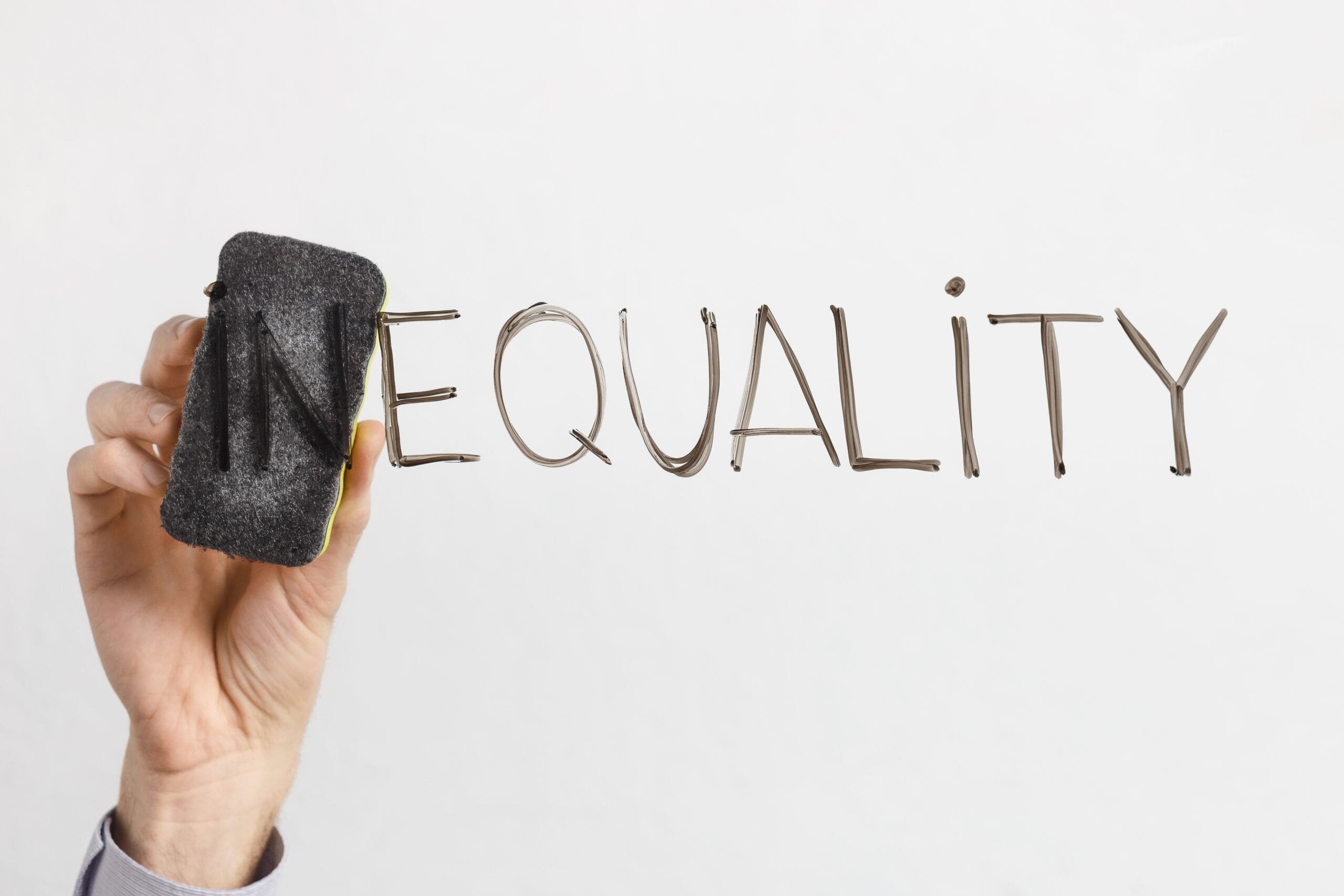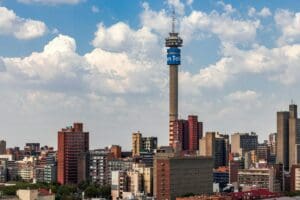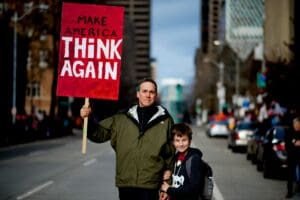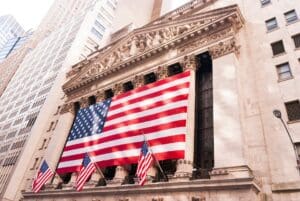By: Ben Steverman.
See original post here.
So far, 2022 is on quite a roll: war, inflation, market selloffs, recession worries, virus lockdowns in China, and record-breaking consumer pessimism in the US, plus a new book by inequality expert Thomas Piketty spotlighting the unfairness of it all. Amid all the gloom, the most unequal of the world’s leading economies has gotten less so. The poorest half of Americans—the much-discussed but largely powerless US working class—are in the strongest financial position in a generation. The bottom 50%, generally households with net worth of $166,000 or less before the pandemic, now hold a bigger share of the nation’s wealth than they’ve had for 20 years, the Federal Reserve estimates. Their collective net worth, $3.73 trillion, has almost doubled in two years and is more than 10 times higher than in 2011, the nadir after the last recession.

The improvement is a result of trillions of dollars in Covid-19 relief and a strong labor market that remains hottest for the lowest-income workers. The two developments are closely linked: People like Mingus Daniels-Taylor, 28, could sock away extra unemployment and stimulus checks while also making moves to better their financial situations in the long term.
When Daniels-Taylor lost her New York City nanny job in March 2020, she was soon so broke that she had to tap a coronavirus care fund set up by the National Domestic Workers Alliance to move back home to Buffalo to live with her mother. Federal help sustained her during a long job search and also allowed her to pay down debt and bank some money. In September 2021 she found a job working customer service for a tech company from home—at double her nanny salary. Now she’s saving to buy her own house in the Buffalo area.
“For the first time since the late 1990s, low-wage workers are gaining ground compared to other workers,” says Columbia University economics professor Suresh Naidu. “If we’re able to have tight labor markets for another year or so, you can imagine a lot of low-wage workers in previously dead-end jobs are going to be able to break into something new—saving, relocating, going to school, and opening up a path into the middle class. ”Is this a pandemic blip or the start of a real trend? It’s too soon to tell. Low-income workers know how quickly gains can evaporate. They’re used to juggling inconsistent incomes and unpredictable expenses. Inflation has already started eating into wage hikes. It also appears to have soured Washington on offering poorer Americans more help. But there remains at least a faint hope that the extraordinary government response to the Covid recession—and the remarkably speedy employment rebound that followed—has begun narrowing the economic gap between the poorest Americans and everyone else. An analysis of Fed data shows the average household in the bottom 50% saw its net worth rise to $57,346 at the end of 2021, from $30,378 at the end of 2019. That’s still far less than the $754,000 in average wealth held by middle-class families in the 50th to 90th percentiles.
Compared with other developed countries, the US has a uniquely large underclass of people who spend their lives cycling through low-paid, dead-end jobs, rarely accumulating any savings at all. In data stretching back to the 1990s, about a quarter of US workers are classified as having low pay, defined by the Organization for Economic Cooperation & Development as less than two-thirds of the median. That’s about 10 percentage points higher than the OECD and European Union averages.
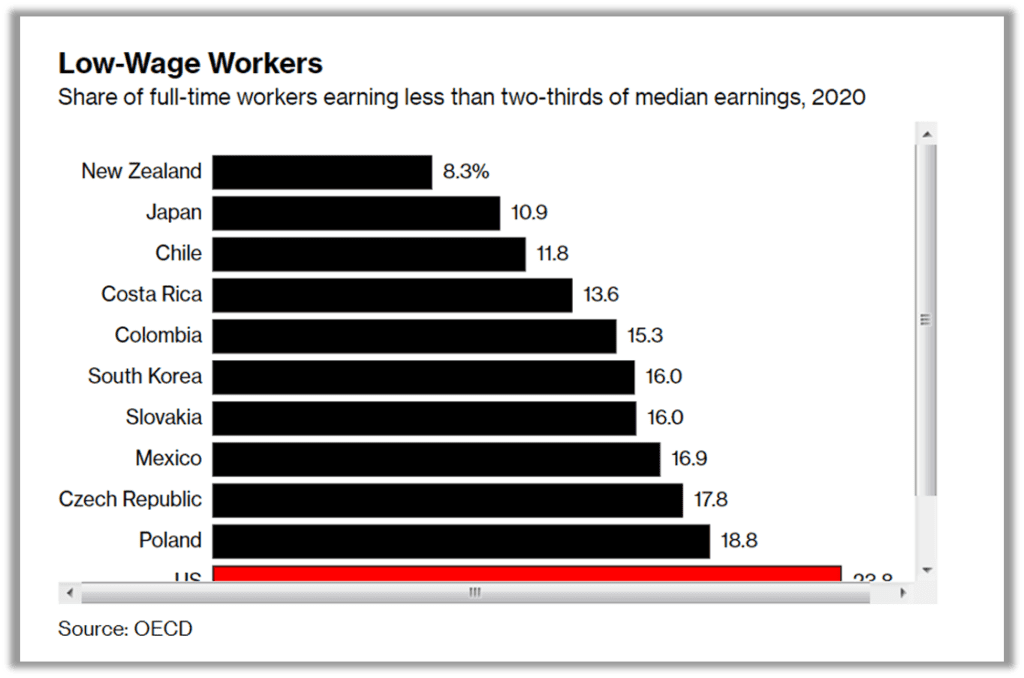
During the pandemic, many of these Americans got a chance to reset their finances. Collecting unemployment checks “was the first time in my life I felt financially secure,” says Emily Peragine, 29, who lost her job as a restaurant server in New York City in 2020. “I could actually breathe for once.” Then, just as government assistance started to peter out, the labor market picked up. Desperate for workers, employers boosted pay, added perks, loosened hiring criteria, and began reimagining unpleasant positions that previously burned through jobholders.
“Is there a labor shortage, or is there a good job shortage?” asks Philip Weinberg, president and chief executive officer of Strive, a job training nonprofit headquartered in New York.
“People are leaving jobs that they view as not good jobs,” he says, and it’s not just because of the wages. “They really want to build a career.”
Phillip Santiago, 42, spent years looking for something, anything, to pay the bills—he was a construction worker, mover, doorman, and payroll processor. The cycle began when he lost his longtime position as a security guard because of a criminal conviction. He was arrested for the first time in his life in 2018, when an aggressive stranger picked a fight with him in the New York City subway. “It was a struggle,” he says of his subsequent job search.
“I would take one step forward, land a good opportunity, and be shut down because of my record. ”Finally, through Strive, Santiago found a job he loves, working in environmental services at a large hospital. His assignments, usually cleaning rooms, aren’t exactly glamorous, but he loves interacting with patients and sees paths for advancement there. “I’m starting from the bottom, but I’m really in a position to better myself and climb up the ladder,” he says.

The number of job postings requiring “minimal” qualifications has surged 53% since early 2020, 12 percentage points more than postings overall, according to a real-time tracker created by Harvard’s Opportunity Insights. The trend accelerated through the first several months of 2022. The intense competition for so-called unskilled labor has pushed up pay: Wages have risen the most for the bottom quarter of the workforce, 6.4% in the 12 months through April, according to Atlanta Fed data, almost three points more than for the best-paid quartile.

The inflation spike after the Ukraine invasion ate up many recent gains, but at the bottom of the wage scale, pay has been rising faster than prices. An inflation-adjusted measure of income by the University of California at Berkeley’s Realtime Inequality site shows the bottom 50%’s pay climbing at an annualized rate of 3.4% in the first quarter of 2022 even as other groups lost ground.
Inflation still hurts, particularly in essential expenses such as food, gas, and rent. It’s also become harder for renters to buy homes, after a pandemic-induced jump in house prices was followed by a rise in mortgage rates.
Still, about half of the bottom 50%’s wealth is in real estate, the Federal Reserve estimates, and their home equity has surged more than $1 trillion in two years. Cash in checking accounts—far more valuable than real estate when someone is suddenly confronted with a car repair bill or an unplanned dental procedure—is also up substantially, from less than $100 billion at the end of 2019 to more than $260 billion going into 2022. In late 2021, a record 68% of adults said they could cover a $400 emergency expense, up 5 percentage points since before the pandemic, according to the Fed’s Survey of Household Economics and Decision making released in May.
A closer look at the Fed data shows that some working-class Americans have found it easier to save than others. While still better off overall than before the pandemic, the poorest fifth of households have been slowly bleeding cash since late 2020. The rest of the bottom 50% continued to stockpile savings even as inflation began climbing. Meanwhile, US credit card delinquencies have plunged more than 40% in the last couple of years, to the lowest levels on record, and mortgage delinquencies are back to pre-pandemic levels.

One development that’s had barely any direct effect on working-class Americans is this year’s stock market selloff. Just 3% of the bottom 50%’s net worth is in stocks or mutual funds, compared with fully half of the top 1%’s wealth.
Thomas Piketty warns that we shouldn’t expect the poorest half of society to ever build substantial wealth without radical policy changes. “The bottom line is that the bottom 50% have never owned anything substantial,” he says. “Some say that we should simply wait for growth to spread the wealth, but this makes little sense in light of historical evidence. We have had growth for the past two centuries, but the bottom 50% wealth share has always been less than 5%. This is an enormous injustice for bottom-50% children, and this is also a big loss of economic initiative and mobility.”
Piketty, a professor at the Paris School of Economics, proposes solutions in his new book, A Brief History of Equality, (roughly one-third the length of his 2014 bestseller Capital in the Twenty-First Century), including a government-funded “minimum inheritance” for each child of at least $150,000, a more ambitious and expensive version of the “baby bonds” idea now being tried out by some US states. “This will require a very long fight,” says Picketty, equating it to the battle for universal suffrage and the end of legal racial segregation.
The best that the US working class might hope for in the near term? A change in the structure of the US labor market so it looks more like those of other developed nations, with a smaller group of workers with extremely low wages.
There are some signs that’s happening: The gap is shrinking between the wages of the bottom 25% of workers and middle-class wage earners at the 50th to 75th percentile, a Bloomberg News analysis finds.
The relative weakness of US organized labor compared with other developed countries is one of the main reasons, along with a low minimum wage, that the US has a uniquely high number of low-income workers in the first place, says Janet Gornick, director of the Stone Center on Socio-Economic Inequality at City University of New York. “That’s had a huge impact on the erosion of earnings at the bottom,” she says. Now unions are scoring some victories at private employers, including Amazon.com Inc. and Starbucks Corp. Of course, the progress is fragile, to say the least. Inflation could erase all wage and wealth gains. Many of the new jobs could disappear if higher interest rates tip the economy into recession or if the rising cost of labor speeds up investments in job-killing automation.
The last two years also don’t seem to have made a large dent in the nation’s wide and persistent racial wealth gap, with the Fed estimating Black households held 4.4% of US wealth at the start of 2022, up only slightly from 4% at the beginning of 2020. A new study by scholars at the University of Bonn and Princeton University, analyzing 160 years of data, found Black Americans in 2019 had one-sixth the per capita wealth of White Americans, a smaller share than in the 1980s.
The chances for more direct government help for working-class Americans are already remote—lawmakers allowed an enhanced child tax credit to expire in January—but they’d shrink to zero if Democrats lose control of Congress in November’s midterm elections, which seems likely. For one thing, the rising net worth of the bottom 50% does little to help Democrats at the polls.
That’s because, at the same time, the share of US wealth held by the politically crucial middle class, in the 50th to 90th percentiles, has slipped to its lowest level in Fed estimates going back to 1989.
“It’s frustrating when the gains at the bottom are coming at the expense of people in the middle and not at the top,” Columbia’s Naidu says. For President Joe Biden and Democrats, he says, “it’s such a political disaster.” Those who’ve struggled in the past aren’t taking anything for granted. “We’re all a little shellshocked,” says Peragine, who’s back at the restaurant that fired her in 2020. “It feels like a mad scramble to get as much as you can in case things come toppling down again.” Sometime in the next year, she and her partner are plotting a move from New York to Los Angeles, “for career and financial reasons.”
Now permanently relocated to Buffalo, Daniels-Taylor says she has a “new mindset” about risk after the wild events of the past few years. “Living paycheck to paycheck is something that I just can’t do anymore,” she says. “I have to find a way to put some money away as a safety net, because this could happen again.”











